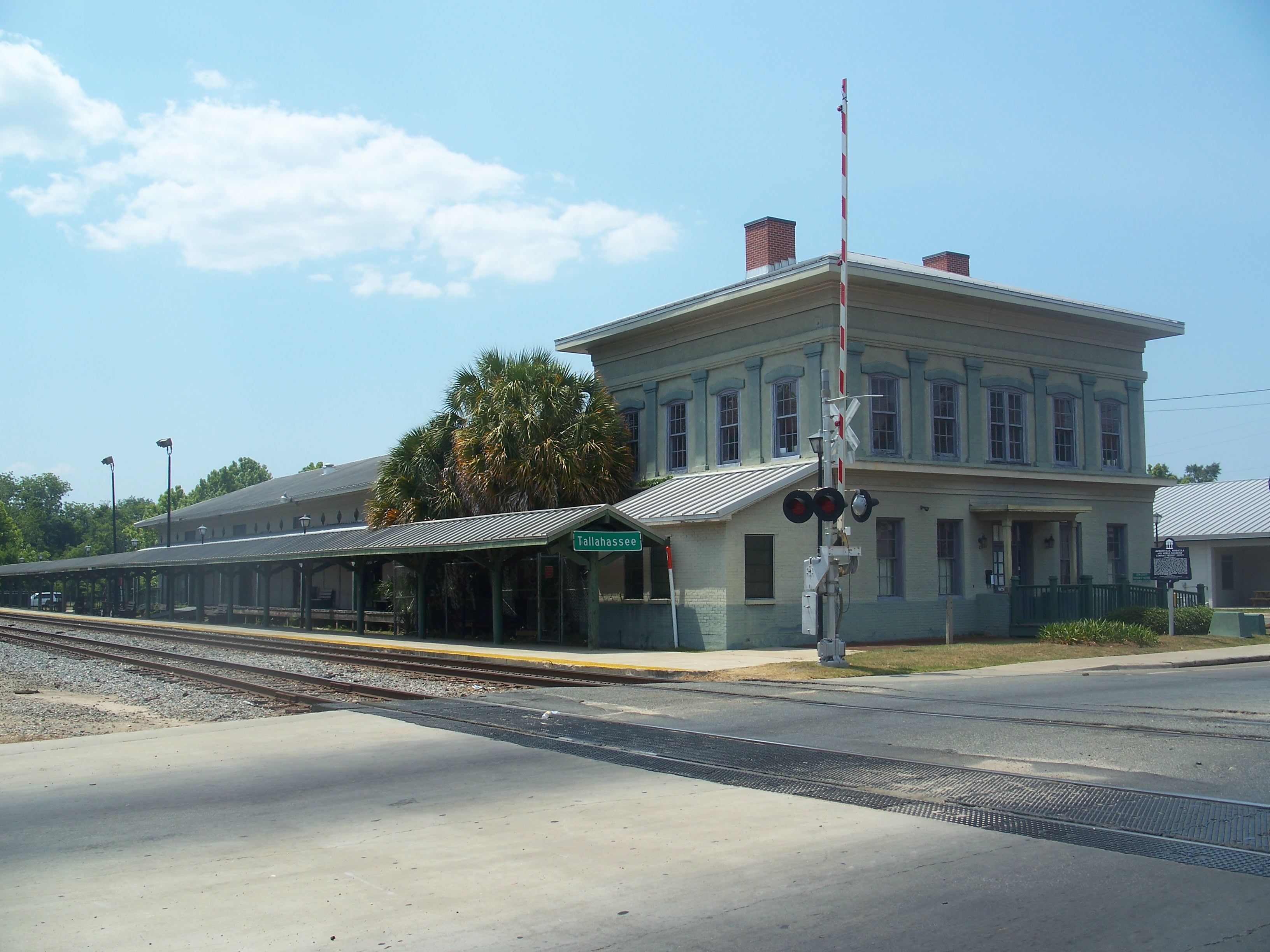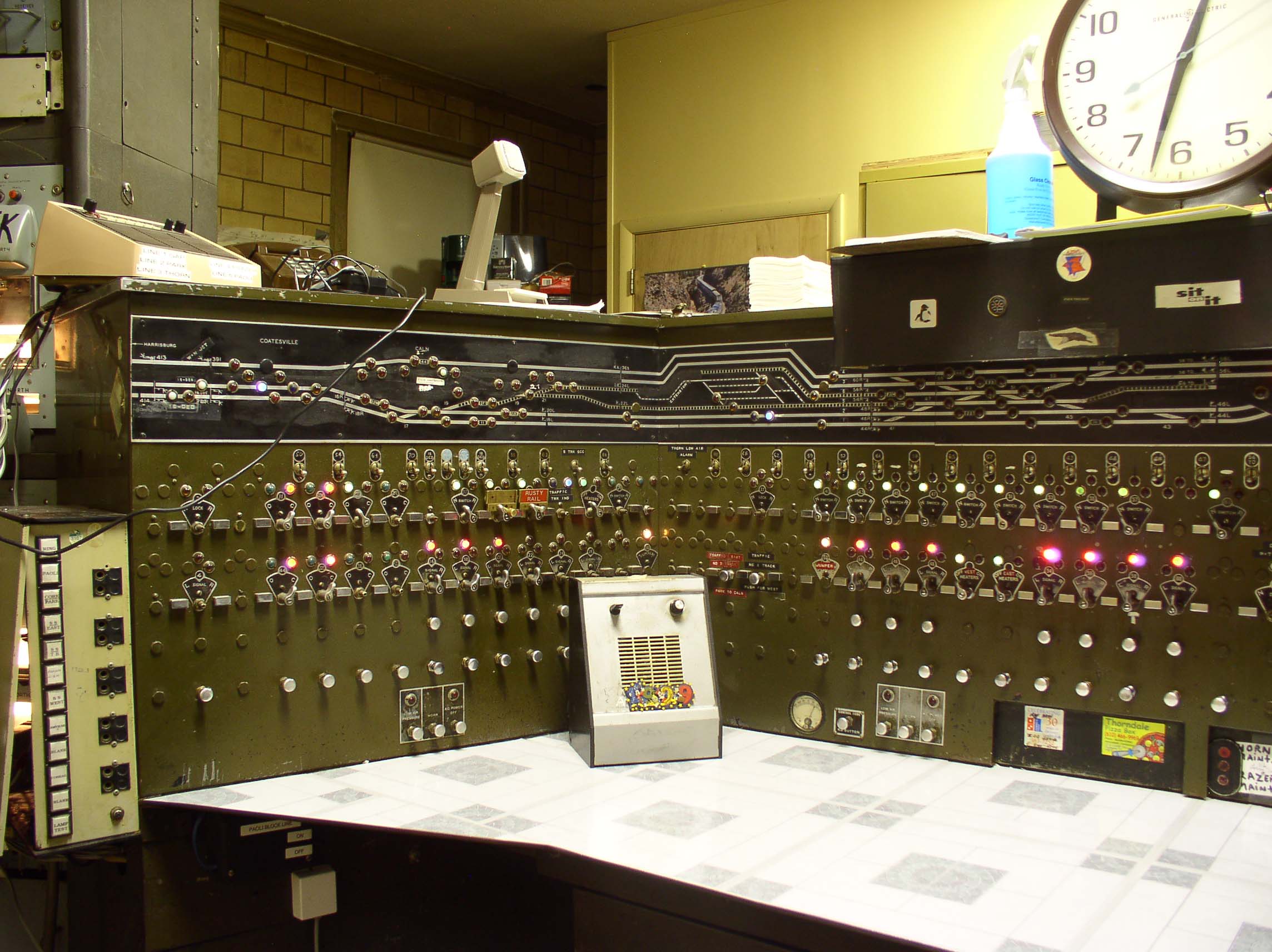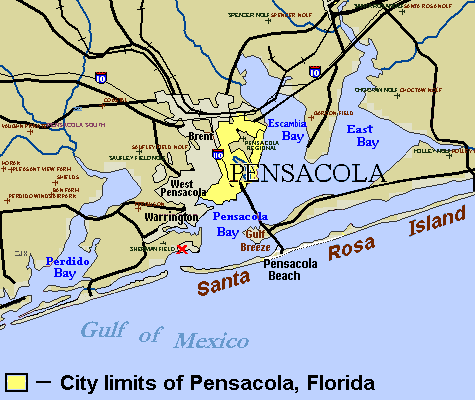|
Florida Gulf And Atlantic Railroad
The Florida Gulf and Atlantic Railroad is a Class III railroad owned and operated by RailUSA in the Florida Panhandle. The line consists of 373 miles (600 km) of track running from Baldwin, Florida (just west of Jacksonville) west through Tallahassee to Pensacola. The line also has a short branch from Tallahassee north to Attapulgus, Georgia. The line connects to CSX lines in Baldwin, Pensacola, and Attapulgus. The FG&A began operation on June 1, 2019, after RailUSA acquired the line from CSX Transportation. The Jacksonville-Pensacola line was the route of the ''Gulf Wind'' streamliner from 1949 to 1971. After two decades of freight-only service, passenger service resumed in 1993 when the route of Amtrak's ''Sunset Limited'' was extended beyond New Orleans to Orlando. Amtrak service was suspended in 2005 due to damage to track and trestles by Hurricane Katrina, and has never resumed east of New Orleans. Lines and history The 373 miles of the Florida Gulf & Atlantic ... [...More Info...] [...Related Items...] OR: [Wikipedia] [Google] [Baidu] |
Florida Panhandle
The Florida Panhandle (also West Florida and Northwest Florida) is the northwestern part of the U.S. state of Florida; it is a Salient (geography), salient roughly long and wide, lying between Alabama on the north and the west, Georgia (U.S. state), Georgia on the north, and the Gulf of Mexico to the south. Its eastern boundary is arbitrarily defined. In terms of population, major communities include Tallahassee, Florida, Tallahassee, Pensacola, Florida, Pensacola, and Panama City, Florida, Panama City. As is the case with the other eight U.S. states that have Salient (geography)#Panhandles in the United States, panhandles, the geographic meaning of the term is inexact and elastic. References to the Florida Panhandle always include the ten List of counties in Florida, counties west of the Apalachicola River, a natural geographic boundary, which was the historic dividing line between the British colonies of West Florida and East Florida. These western counties also lie in t ... [...More Info...] [...Related Items...] OR: [Wikipedia] [Google] [Baidu] |
Main Line (railway)
The main line, or mainline in American English, of a railway is a track that is used for through trains or is the principal artery of the system from which branch lines, yards, sidings and spurs are connected. It generally refers to a route between towns, as opposed to a route providing suburban or metro services. It may also be called a trunk line, for example the Grand Trunk Railway in Canada, the Trunk Line in Norway, and the Trunk Line Bridge No. 237 in the United States. For capacity reasons, main lines in many countries have at least a double track and often contain multiple parallel tracks. Main line tracks are typically operated at higher speeds than branch lines and are generally built and maintained to a higher standard than yards and branch lines. Main lines may also be operated under shared access by a number of railway companies, with sidings and branches operated by private companies or single railway companies. Railway points (UK) or switches (US) are usuall ... [...More Info...] [...Related Items...] OR: [Wikipedia] [Google] [Baidu] |
Centralized Traffic Control
Centralized traffic control (CTC) is a form of railway signalling that originated in North America. CTC consolidates train routing decisions that were previously carried out by local signal operators or the train crews themselves. The system consists of a centralized train dispatcher's office that controls railroad interlockings and traffic flows in portions of the rail system designated as CTC territory. One hallmark of CTC is a control panel with a graphical depiction of the railroad. On this panel, the dispatcher can keep track of trains' locations across the territory that the dispatcher controls. Larger railroads may have multiple dispatcher's offices and even multiple dispatchers for each operating division. These offices are usually located near the busiest yards or stations, and their operational qualities can be compared to air traffic towers. Background Key to the concept of CTC is the notion of ''traffic control'' as it applies to railroads. Trains moving in opposite ... [...More Info...] [...Related Items...] OR: [Wikipedia] [Google] [Baidu] |
Seaboard Air Line Railroad
The Seaboard Air Line Railroad , which styled itself "The Route of Courteous Service," was an American railroad which existed from April 14, 1900, until July 1, 1967, when it merged with the Atlantic Coast Line Railroad, its longtime rival, to form the Seaboard Coast Line Railroad. Predecessor railroads dated from the 1830s and reorganized extensively to rebuild after the American Civil War. The company was headquartered in Norfolk, Virginia, until 1958, when its main offices were relocated to Richmond, Virginia. The Seaboard Air Line Railway Building in Norfolk's historic Freemason District still stands and has been converted into apartments. At the end of 1925 SAL operated 3,929 miles of road, not including its flock of subsidiaries; at the end of 1960 it reported 4,135 miles. The main line ran from Richmond via Raleigh, North Carolina, Columbia, South Carolina, and Savannah, Georgia to Jacksonville, Florida, a major interchange point for passenger trains bringing travele ... [...More Info...] [...Related Items...] OR: [Wikipedia] [Google] [Baidu] |
Florida Central And Peninsular Railroad
The Florida Central and Peninsular Railroad was the final name of a system of railroads throughout Florida, becoming part of the Seaboard Air Line Railway in 1900. The system, including some of the first railroads in Florida, stretched from Jacksonville west through Tallahassee and south to Tampa. Much of the FC&P network is still in service under the ownership of CSX Transportation. History The Tallahassee Rail Road was first organized in 1832 as the Leon Railway, changing its name in 1834. It opened in 1837, connecting Tallahassee, Florida to the Gulf of Mexico port of St. Marks, Florida. This was the second steam railroad in Florida, opening just a year after the Lake Wimico and St. Joseph Canal and Railroad. The Florida, Atlantic and Gulf Central Railroad was chartered January 24, 1851, to build west from Jacksonville, Florida, and construction began in 1857. The Pensacola and Georgia Railroad was chartered in January 1853, to be built east from Pensacola, Florida, but ... [...More Info...] [...Related Items...] OR: [Wikipedia] [Google] [Baidu] |
Florida Central And Western Railroad
The Florida Central and Western Railroad was a rail line built in the late 1800s that ran from Jacksonville west across North Central Florida and the part Florida Panhandle through Lake City and Tallahassee before coming to an end at Chattahoochee. The line was later part of the Seaboard Air Line Railroad network from 1903 to 1967, and was primarily their Tallahassee Subdivision. The full line is still in service today and is now part of the Florida Gulf and Atlantic Railroad. History Construction and early years From Jacksonville west to Lake City, the Florida Central and Western Railroad was first built by the Florida, Atlantic and Gulf Central Railroad (not to be confused with the Florida Gulf and Atlantic Railroad, the current operator of the line). The Florida, Atlantic and Gulf Central Railroad (FA&GC) was chartered on January 24, 1851 by Abel Seymour Baldwin (the namesake of Baldwin, Florida) and construction began at Lake City in 1857. During the Civil War, the rai ... [...More Info...] [...Related Items...] OR: [Wikipedia] [Google] [Baidu] |
Edward Reed (naval Architect)
Sir Edward James Reed, KCB, FRS (20 September 1830 – 30 November 1906) was a British naval architect, author, politician, and railroad magnate. He was the Chief Constructor of the Royal Navy from 1863 until 1870. He was a Liberal politician who sat in the House of Commons from 1874 to 1906. Early life Edward Reed was born in Sheerness, Kent and was the son of John and Elizabeth Reed. He was a naval apprentice at Sheerness and subsequently entered the School of Mathematics and Naval Construction at Portsmouth. In 1851 he married Rosetta, the sister of Nathaniel Barnaby. Barnaby was at that time a fellow student; he would subsequently succeed Reed as Chief Constructor. In 1852 he entered employment at Sheerness Dockyard, but resigned after a disagreement with the management. He then worked in journalism, including editing the '' Mechanics' Magazine''. In 1860, Reed was appointed secretary of the newly formed Institute of Naval Architects. Naval architect In 1863, at the ear ... [...More Info...] [...Related Items...] OR: [Wikipedia] [Google] [Baidu] |
Pensacola And Atlantic Railroad
The Pensacola and Atlantic Railroad (P&A) was a company incorporated by an act of the Florida Legislature on March 4, 1881, to run from Pensacola to the Apalachicola River near Chattahoochee, a distance of about . No railroad had ever been built across the sparsely populated panhandle of Florida, which left Pensacola isolated from the rest of the state. William D. Chipley and Frederick R. De Funiak, both of whom are commemorated in the names of towns later built along the P&A line ( Chipley and DeFuniak Springs), were among the founding officers of the railroad company. Chipley was general manager of the Pensacola Railroad, (formerly the Pensacola and Louisville Railroad, originally the Alabama and Florida Railroad, completed in 1860). The Pensacola Railroad connected Pensacola with the large, prosperous Louisville and Nashville Railroad (L&N) at Pollard, Alabama, about northward. The Pensacola Railroad had become a subsidiary of the L&N on October 20, 1880. It was Chipley, ... [...More Info...] [...Related Items...] OR: [Wikipedia] [Google] [Baidu] |
Chattahoochee, Florida
Chattahoochee is a city in Gadsden County, Florida, United States. Its history dates to the Spanish era. The population was 3,652 as of the 2010 census, up from 3,287 at the 2000 census. It is part of the Tallahassee, Florida Metropolitan Statistical Area. Chattahoochee sits on the banks of the Apalachicola River, and is separated by the Apalachicola and Victory bridges from neighboring Sneads, Florida, which is in Jackson County. Chattahoochee has its own police force with over ten sworn officers and a police chief. Chattahoochee is a name derived from the Creek language meaning "marked rocks". History The area was inhabited by indigenous peoples who built mounds in the area ( Chattahoochee Oanding Mounds). Chattahoochee was established as Mount Vernon in the 1820s. A British Fort, Nicolls' Outpost was built in the area. The Scott Massacre of 1817 took place. A ferry was established. Geography Chattahoochee is located in the northwest corner of Gadsden County at 30°42′N ... [...More Info...] [...Related Items...] OR: [Wikipedia] [Google] [Baidu] |
Quincy, Florida
Quincy is a city in and the county seat of Gadsden County, Florida, United States. The population was 7,972 at the 2010 census, up from 6,982 at the 2000 census. Quincy is part of the Tallahassee metropolitan area. History Established in 1828, Quincy is the county seat of Gadsden County, and was named for John Quincy Adams. It is located northwest of Tallahassee, the state capital. Quincy's economy was based on agriculture, including farming tomatoes, tobacco, mushrooms, soybeans and other crops. According to ''The Floridian'' newspaper, in 1840 before there were public schools anywhere else in the Florida Territory, there were in Quincy the Quincy Male Academy and the Quincy Female Academy. Joshua Knowles published the ''Quincy Sentinel'' in Quincy from November 1839 until it relocated to Tallahassee and became the '' Florida Sentinel'' in 1841. The paper began publishing in Tallahassee in February or March 1841 as a successor to Quincy Sentinel. Tobacco In 1828, Governor W ... [...More Info...] [...Related Items...] OR: [Wikipedia] [Google] [Baidu] |
Pensacola And Georgia Railroad
Pensacola () is the westernmost city in the Florida Panhandle, and the county seat and only incorporated city of Escambia County, Florida, United States. As of the 2020 United States census, the population was 54,312. Pensacola is the principal city of the Pensacola Metropolitan Area, which had an estimated 502,629 residents . Pensacola is the site of the first Spanish settlement within the borders of the continental United States in 1559, predating the establishment of St. Augustine by 6 years, although the settlement was abandoned due to a hurricane and not re-established until 1698. Pensacola is a seaport on Pensacola Bay, which is protected by the barrier island of Santa Rosa and connects to the Gulf of Mexico. A large United States Naval Air Station, the first in the United States, is located southwest of Pensacola near Warrington; it is the base of the Blue Angels flight demonstration team and the National Naval Aviation Museum. The main campus of the University of West Flo ... [...More Info...] [...Related Items...] OR: [Wikipedia] [Google] [Baidu] |
Lake City, Florida
Lake City is a city in northern Florida. It is the county seat of Columbia County, Florida, United States. As of the 2020 census, the city's population was 12,329. It is the principal city of the Lake City Micropolitan Statistical Area, which is composed of Columbia County, and had a 2010 population of 67,531. Lake City is 60 miles west of Jacksonville. Lake City began as the town of Alligator in 1821 near the Seminole settlement known as Alligator Village. Alligator became the seat of Columbia County in 1832 when it was formed from Duval and Alachua counties. In 1858 Alligator was incorporated and renamed Lake City. The largest American Civil War battle in Florida took place near here in the Battle of Olustee in 1864; the Confederates won. In 1884 the Florida Agricultural College was established in Lake City as a land grant college; it was relocated to Gainesville in 1905 to form part of the University of Florida. The city's sesquicentennial was held in 2009. Lake City is kn ... [...More Info...] [...Related Items...] OR: [Wikipedia] [Google] [Baidu] |








